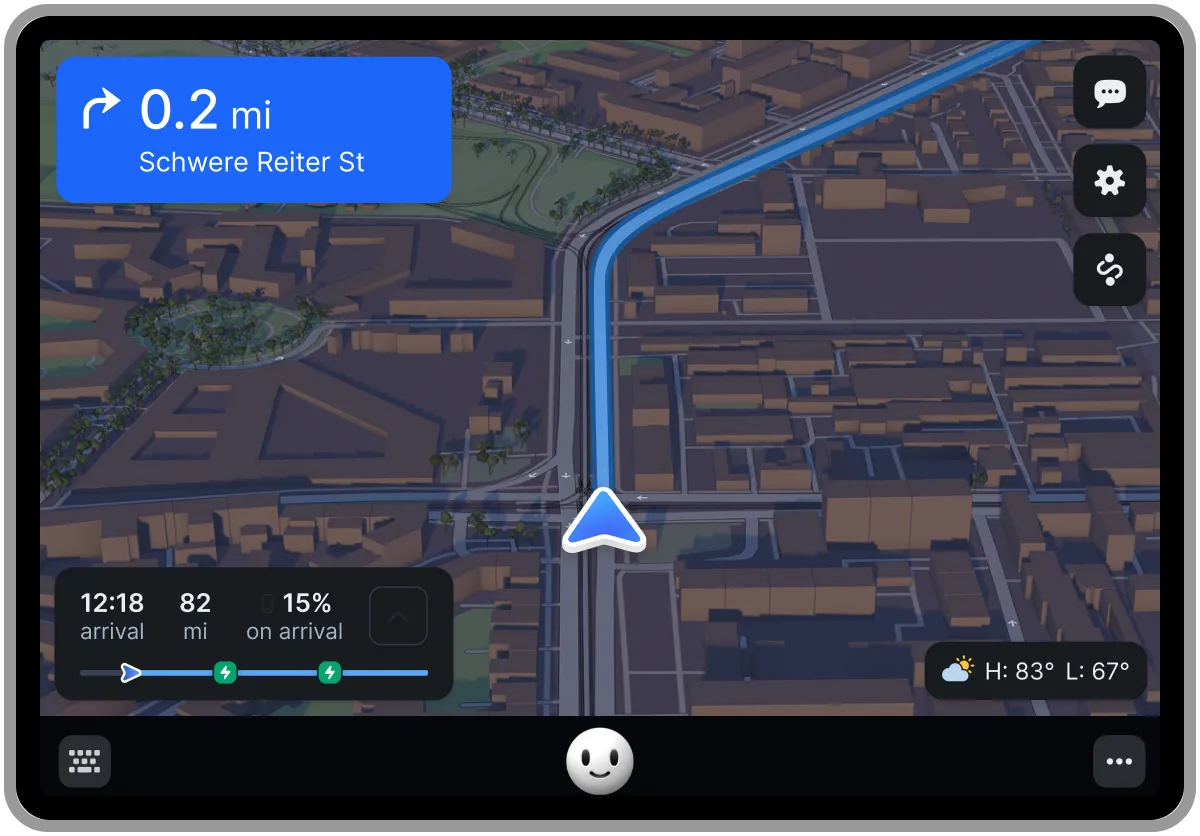Whether it is for launching nuclear missiles or simply landing a plane, precise navigation was ubiquitously needed during the Cold War, and almost all of these requirements paled in comparison to the billions of dollars that had to be spent on researching, creating, deploying and operating a constellation of GPS satellites.
Every satellite carries atomic clocks whose time is referenced to each other and to reference clocks at ground control stations to precise, fraction-of-a-second accuracy.
Accuracy
So, knowing where your car is and in which direction you are driving is the very essence of what a navigation system does. You have already started doing it before you even took your seat behind the steering wheel. You can rely on digital compass data from your smartphone to guide you along the way.
The satellites transmit and receive short radio messages to and from one another using atomic clocks, whose individual timepieces must all be synchronised to reference clocks back in the ground control stations. A GPS device can get its location by matching these range data against the pairs of satellites to its own clock.
Yet environmental disruptions can block the signal. For example, there is the ionosphere delay, wherein charged particles in the upper atmosphere can distort the GPS signal, and there’s the troposphere delay, which occurs because the GPS signal bends more as it passes through atmospheric gases such as water vapour, which tend to have more electrons travelling about compared with other gases in Earth’s atmosphere. Then there’s the multipath delay caused by the signal bouncing off tall buildings, or trees or your automobile. Satellite geometry or shading can also distort it, and was even (until May 2000) used by forces in the US DoD as a blockage strategy against, say, foes who might have been using it to block them.
Customization
GPS technologies are found across various industries and applications: Mapping Of Objects Or Individuals ~ Surveyors ~ Boat Captains ~ First RespondersConstructionafs; Mining Companies; Off-Road Trucking Fleets ~ In-Vehicle GPS For Route Optimisation ~ Safety/Productivity Of DriversLogistics Companies ~ Telematics Systems ~ Vehicle Performance Efficiencies.
Sophisticated GPS directional systems that are programmable for the specific vehicle dimensions (such as height, width and length) and permitted road sizes permit drivers to plan the best and safest route to their destination based on both government legality and high-quality precision, including the avoidance of steep or narrow roads with speed limits as well as audible turn-by-turn directions.
Global Positioning System (abbr: GPS) is an interconnected satellite navigation system consisting of 24 satellites under the supervision of the US government. Three dimensional positioning and time data is delivered down to the user segment worldwide and 24/7 (accurate to one-meter in a three-dimensional space). The signal is collected by the GPS receivers (this is the user segment). In every GPS receiver there are atomic clocks, redundantly located, and these clocks are monitored by the engineers who work in the control segment.
Real-time Updates
High-end in-car navigation systems can cope with any road situation. An already smooth route can be disturbed by a traffic jam, construction site or difficult detour; however, these can be overcome by a satellite-grip enhancement. With the latest in-vehicle global positioning systems fitted, the on-board computer and screen display will swiftly recalculate in the background and get the driver back on track.
These. GPS systems play a major role in avoiding accidents: lane departure warnings tell you when you’re drifting out of your lane, usually long enough before you cross a solid white line into oncoming traffic.
They can also be coupled with Automatic Identification and Reporting System (AIS), which transmits a vessel’s ID and position, speed and course, to enable ships and aircraft to maintain a safe distance from each other with better air traffic management, navigation and safety. Some GPS devices include passive unjammable celestial aiding, which essentially combines the output of other sensors (gyroscopes, magnetometers, etc) to mimic GPS performance in denied GPS environments, including those that are subject to even jamming and spoofing.
Safety
In addition to the obvious benefit of telling drivers where to go, GPS systems provide several safety features to protect drivers and cargo. For example, some systems allow drivers to select the speed for their cruise control, and then alert them if they are approaching that speed; this can prevent expensive speeding fines and keep trucks and cargo safely out of the slow lane.
Some systems come with a feature that allows automatic diversion. When your route take a spur and deviates from their planned route, the system will automatically reroute to give you an alternate path.This is great when there are construction or accident closures as well as when there are road blockades where the police have prohibited traffic. It will save the need for you to stop and read a road sign and panic when you can’t recall the route you took before. It will save time, save you from frustration, and help to ensure that you get to your destination on time.
Other security features include detection of roadside obstacles and recommending the best detour around them that minimises traffic jams and fuel use, to save the planet some more trees. Certain modern GPS systems even monitor vehicle maintenance needs and recommend timely repair before it is too late, a blessing to those who have had to haggle with roadside garages after an accident.

